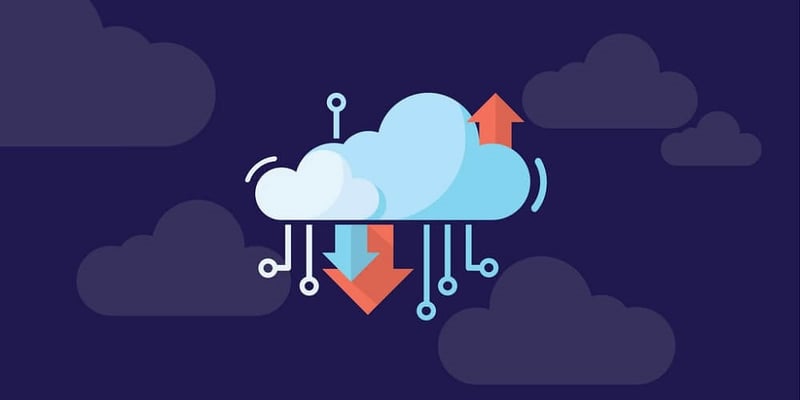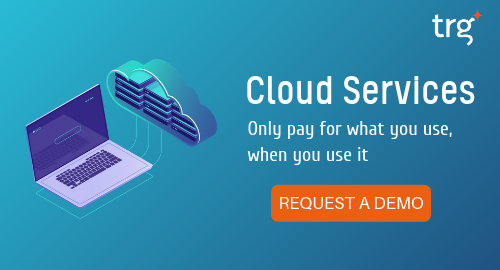Somewhere along the line, a disease known as cloud-washing was initiated by a number of unconscientious cloud providers who share an appeal for shortcuts and, as a consequence, it is now spreading like wildfire. This practice, without question, can play havoc with your business’ digital transformation. In this midst of chaos, how could enterprises spot these deceptive, substandard services that are disguised as “cloud”?
Contents
- What makes Cloud Cloud?
- 5 attributes of a cloud-native service
- Cloud-washed vs. Cloud-native
- The ultimate cloud-washed checklist

What makes Cloud Cloud?
Arguably, cloud computing is now a pervasive and universal practice among enterprises. According to a report by CompTIA1, nearly half of all companies claim that 31 per cent to 60 per cent of their IT systems are cloud-based. This adoption rate is expected to keep rising.
But considering the trouble and the cost involved in the process of developing original cloud-native software, some vendors risk losing their credibility and engaging in the so-called cloud washing. Its definition could be offered as follows:
Cloud washing is a marketing ploy through which a product/service is rebranded and/or repackaged to be associated with the buzzword “cloud”.
But to get a firm grasp on it, we need to have a clear understanding of what its opposite concept – cloud-native - means. According to The National Institute of Standard and Technology (NIST), cloud computing is:
"A model for enabling ubiquitous, convenient, on-demand network access to a shared pool of configurable computing resources (e.g., networks, servers, storage, applications and services) that can be rapidly provisioned and released with minimal management effort or service provider interaction."
5 attributes of a cloud-native service
NIST also asserts that to be considered cloud native, a solution/service must encompass all these 5 essential characteristics:
- On-demand self-service
- Broad network access
- Resource pooling
- Rapid elasticity
- Measured service
Cloud-washed vs. Cloud-native
To be clear, there is nothing inherently wrong with on-premises software. And to be much clearer, on-premises software is still around because it still manages to offer certain benefits that the cloud could not, and the cloud is still on its way to reaching the peak of innovation.
That being said, cloud-native outperforms in any number of critical domains, one of which is financial - cloud computing is much more cost-effective.
We have discussed the numerous benefits of cloud computing in previous blog posts. But if you unwittingly deploy cloud-washed software in your enterprise, you are giving up a lot of those benefits the true-colour cloud could offer. On top of that, the transparency of your “cloud provider” is to be questioned.
People are misled to believe that any service provided over the internet refers to the cloud. This misconception must be dispelled. Cloud-native software must be originally built on and fully integrated with the cloud from scratch.
Yet to the untrained eyes, cloud-native and cloud-washed software may seem like 2 peas in 1 pod. Taking advantage of this, vendors engage in what we have been calling cloud-washing.
So to help you distinguish one from another, here is the checklist of telltale indicators pointing to a cloud-washed service. Note that this is not an exhaustive list, but a cornerstone for improving the transparency of cloud services.
The ultimate cloud-washed checklist
1. Inconsistent patterns in UI/UX and application security
Authentic cloud software must be able to provide a homogeneous experience to all users. No exception.
2. Complexity in the billing method
Characterised as a measured service, cloud-native software kills the pain in billing issues by adopting subscription-based billing, also known as pay-per-use. Simply speaking, you pay for what you use and when you use it. This makes way for the ease of monitoring and cost optimising.
3. Multi-tenancy being out of the question
This one is the most indicative sign of whether or not the software is truly cloud-based. A multi-tenant model allows for resources to be provisioned, released, and re-provisioned based on customer needs. Any provider shying away when being pushed about multitenancy should be suspected of exercising cloud-washing.
4. The need for purchasing extensive appliances and/or worse, building a new data centre to run the application
Cloud-native software is originally built on the foundation of a virtualised infrastructure and is offered as a pure SaaS, suggesting that it required minimal to no physical intervention from both providers and clients.
5. A prolonged interval between application updates
An authentic cloud-native software needs updating at least three to four times a year.
6. Lack of on-demand self-service capabilities
Self-service, self-provisioning and on-demand capabilities are at the core of SaaS. Ditch your provider if their services fail to meet these needs.
7. Restriction on scalability
More than usual, there is no limit to the provisioning capability of a true-colour cloud service. Any software that violates this is not a genuine cloud.
One more subtle way to spot a cloud-washed application is to trace it back to its native land. An authentic cloud service should be the product of an authentic provider. At TRG, we offer a broad set of applications running on AWS, the world's undisputed leader in cloud infrastructure. Request a free demo today and find out how our cloud-native services can bring your business to a new height.
Read more: AWS-powered Infrastructure benefits Cloud ERP
Sources:
1. CompTIA, Trends in Cloud Computing 2018, CompTIA, May 2018, https://www.comptia.org/resources/cloud-computing-trends-research
 English
English  Vietnamese
Vietnamese 

